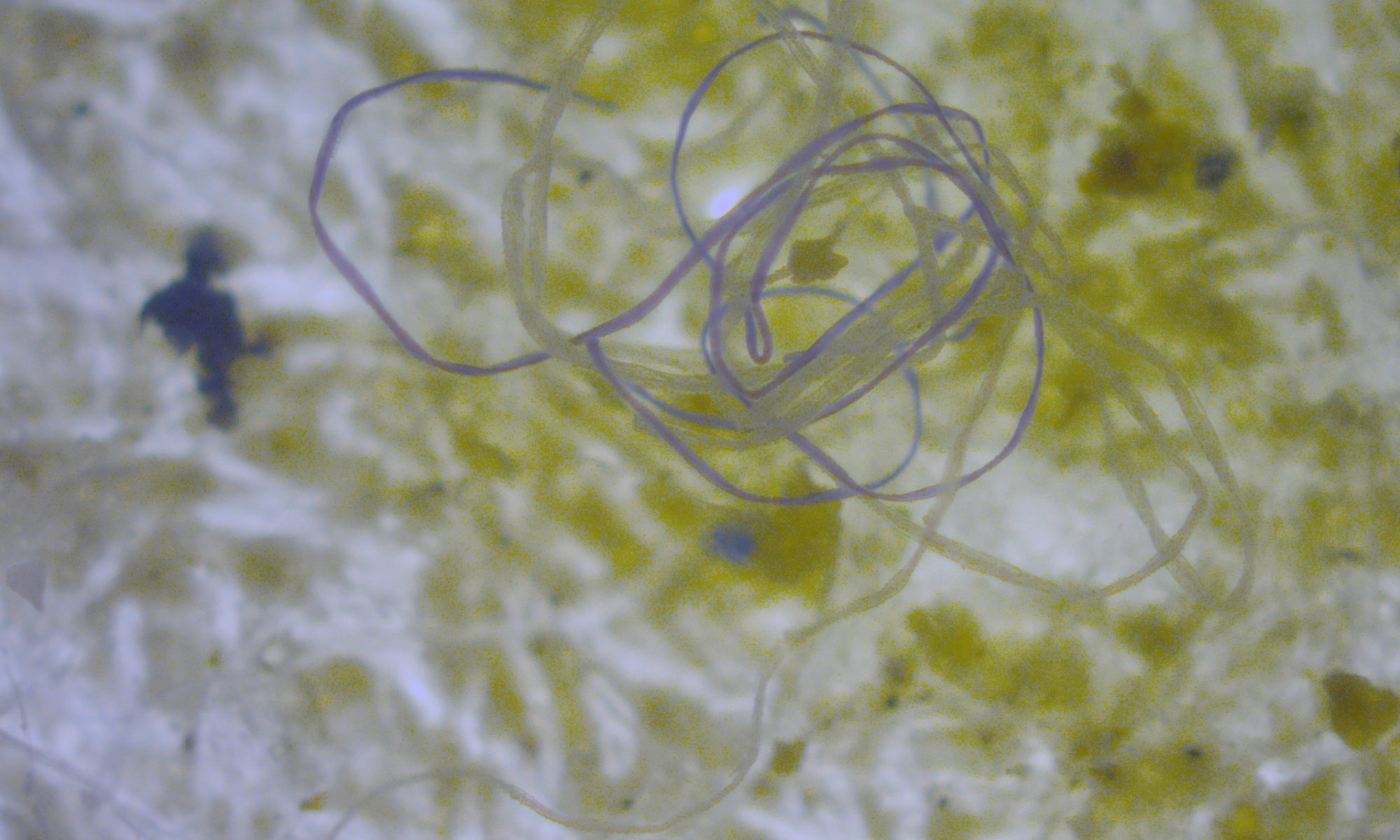Featured image: Microplastic thread courtesy of M.Danny25 on Wikipedia under CC BY-SA 4.0.
The Arctic is full of plastic–polyester fibers to be exact. Peter S. Ross and his team found upwards of forty polyester fibers for every cubic meter of the Arctic Ocean’s surface. Their new study in Nature Communications also revealed that these fibers were more common in the East Arctic, which is fed by the Atlantic Ocean, than the West Arctic. The scientists suggest that the presence of these fibers coupled with their uneven distribution throughout the ocean could be due to an unlikely source: home laundry.
Washing one piece of clothing can shed hundreds of thousands of synthetic fibers into a water supply. Since these plastics are so small, both the washing machine and traditional wastewater treatment plants are unable to filter them out. The researchers also measured the length of the fibers they found in their sample: a shorter fiber is more weathered, meaning it’s farther from its source. They discovered that fiber length and distribution were correlated in their samples, such that fibers were more common and longer in the East Arctic than in the West Arctic. Coupling these findings, the researchers suggest that the sources of the microplastics found in these are America and Europe. These findings are troubling when accounting for people–especially the indigenous in the Arctic–that rely heavily on seafood in their diets.
Top: Distribution of polyester fibers in the Arctic Ocean with yellow indicating higher concentration. Bottom: Average polyester fiber length throughout the Arctic Ocean with yellow indicating longer fibers. Figure adapted from Ross et al. (2021) under CC BY-SA 4.0.
Ross and his team collected 71 samples of Arctic Ocean water from the first three to eight meters of the surface. The team utilized four different research cruises in order to maximize the geographic distribution of their samples. The samples were first analyzed using a high-powered microscope to find the amount of fibers in the samples as opposed to other microplastics like microbeads. In order to do this, Ross et al. used visual microscopy to identify the particles that looked like fibres–microplastic fibres were defined as having relatively straight edges, even coloration, flat ends with no fraying, and may curl or crimp in three dimensions.
Determining the amount of fibers in the sample is one task, but the team wanted to also figure out what they were made out of. To do this, the researchers used a method called Fourier transform infrared spectroscopy (FTIR). In FTIR, infrared light is shone through a liquid or gas, and a detector on the opposite side collects the light that passes through the samples. Different materials absorb light at different wavelengths, so the wavelengths that are missing from the data indicate the composition of the sample.
Using these methods in tandem, the team found that 92.3% of the microplastics in their samples were fibres. 73.3% of these microplastics were polyester. The researchers also checked for nylon, polypropylene, and polyethylene, which are common plastics used in fishing nets and ropes. But the team found that their samples only consisted of 8.3% nylon, 3.3% polypropylene, and 0% polyethylene.
This research suggests that home laundry in areas bordering the North Atlantic Ocean, like America and Europe, are responsible for an inordinate amount of microplastic in the Arctic. As the fibers are shed in laundry, they enter the wastewater and, eventually, the Atlantic Ocean. Once there, they flow into the Arctic, where they are gradually broken down as they move toward the Pacific. Even worse, these findings are consistent with other, similar studies of microplastic fiber presence in the near-surface water of other areas of the Arctic Ocean. These findings add a new dimension to the ongoing discussion in geologic and environmental research on the inputs and effects of microplastics in the world’s water, and can help elucidate just how widespread the problem is.
There’s microplastics in the Arctic, and we can probably blame home laundry by Kevin Hurler is licensed under a Creative Commons Attribution-ShareAlike 4.0 International License.

